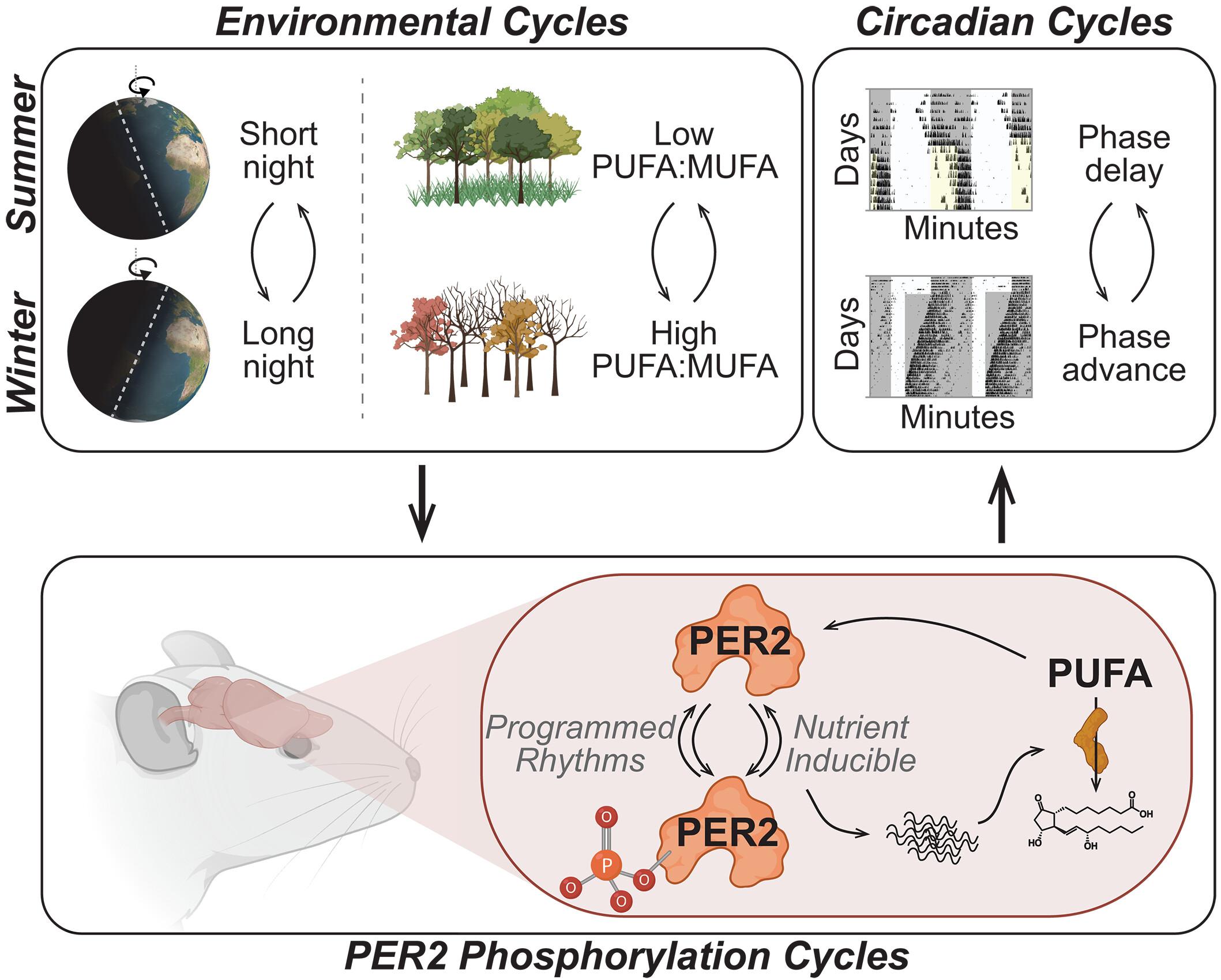不饱和脂肪改变生物钟磷酸化,使小鼠的节律与季节保持一致
IF 45.8
1区 综合性期刊
Q1 MULTIDISCIPLINARY SCIENCES
引用次数: 0
摘要
生物钟通过整合环境信号来维持生物过程和光/暗周期之间的同步。人们对生物钟如何适应环境中的季节变化还不完全了解。我们发现高脂肪饮食增加了丝氨酸662 (S662)上的时钟蛋白PERIOD2 (PER2)的磷酸化,这对于调节日常运动活动的相移以进入季节性光周期是必要和充分的。PER2-S662磷酸化与调节下丘脑多不饱和脂肪酸(PUFA)转化为氧化脂质的全基因组表达途径相关。在对照小鼠中,膳食PUFAs的部分氢化增加了下丘脑PER2-S662的磷酸化和夏季光期的携带,但在PER2-S662不能磷酸化的小鼠中没有。PER2-S662磷酸化受不饱和脂肪的影响,并改变不饱和脂肪的调节,以控制不同季节的昼夜节律相移。本文章由计算机程序翻译,如有差异,请以英文原文为准。

Unsaturated fat alters clock phosphorylation to align rhythms to the season in mice
The circadian clock maintains synchrony between biological processes and light/dark cycles by integrating environmental cues. How the clock adapts to seasonal variations in the environment is incompletely understood. We found that a high-fat diet increased phosphorylation of the clock protein PERIOD2 (PER2) on serine 662 (S662), which was necessary and sufficient for regulating phase shifting of daily locomotor activity to entrain to seasonal light cycles. PER2-S662 phosphorylation correlated with genome-wide expression pathways that regulate polyunsaturated fatty acid (PUFA) conversion into oxylipins in the hypothalamus. Partial hydrogenation of dietary PUFAs increased hypothalamic PER2-S662 phosphorylation and entrainment to a summer photoperiod in control mice, but not in mice for which PER2-S662 could not be phosphorylated. PER2-S662 phosphorylation is influenced by, and alters the regulation of, unsaturated fat to control circadian phase shifting across the seasons.
求助全文
通过发布文献求助,成功后即可免费获取论文全文。
去求助
来源期刊

Science
综合性期刊-综合性期刊
CiteScore
61.10
自引率
0.90%
发文量
0
审稿时长
2.1 months
期刊介绍:
Science is a leading outlet for scientific news, commentary, and cutting-edge research. Through its print and online incarnations, Science reaches an estimated worldwide readership of more than one million. Science’s authorship is global too, and its articles consistently rank among the world's most cited research.
Science serves as a forum for discussion of important issues related to the advancement of science by publishing material on which a consensus has been reached as well as including the presentation of minority or conflicting points of view. Accordingly, all articles published in Science—including editorials, news and comment, and book reviews—are signed and reflect the individual views of the authors and not official points of view adopted by AAAS or the institutions with which the authors are affiliated.
Science seeks to publish those papers that are most influential in their fields or across fields and that will significantly advance scientific understanding. Selected papers should present novel and broadly important data, syntheses, or concepts. They should merit recognition by the wider scientific community and general public provided by publication in Science, beyond that provided by specialty journals. Science welcomes submissions from all fields of science and from any source. The editors are committed to the prompt evaluation and publication of submitted papers while upholding high standards that support reproducibility of published research. Science is published weekly; selected papers are published online ahead of print.
 求助内容:
求助内容: 应助结果提醒方式:
应助结果提醒方式:


